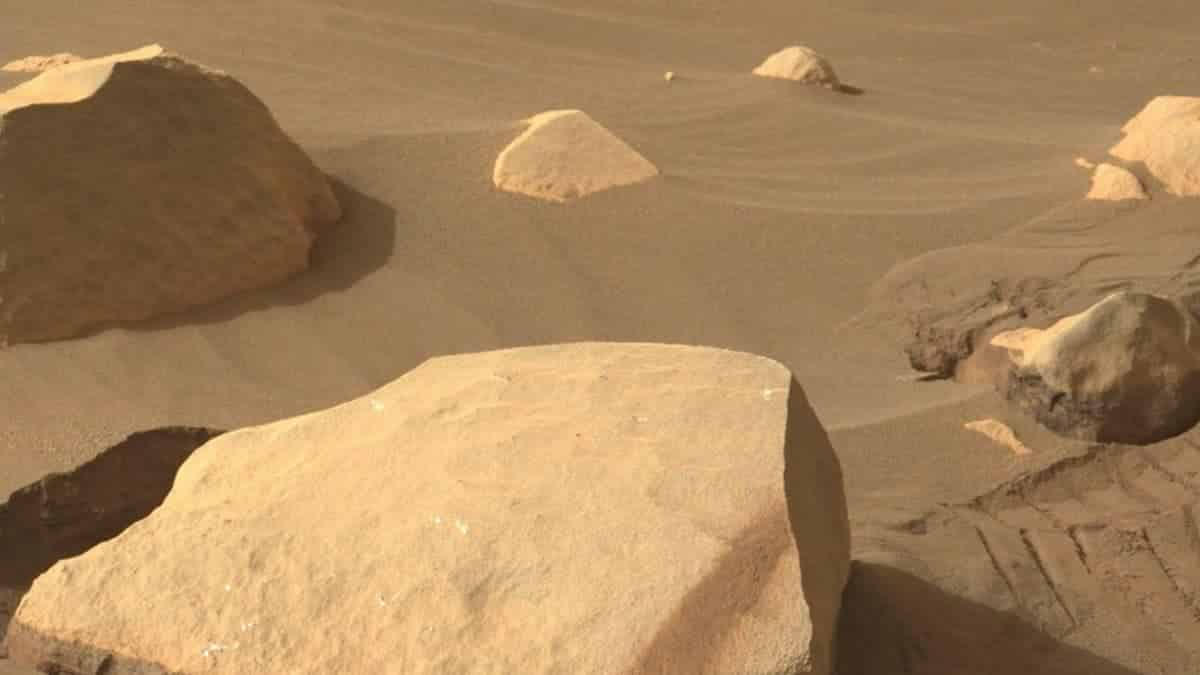Ridgeline Is Scouted By NASA’s Mars Helicopter For The Perseverance Science Team

The Ingenuity Mars Helicopter of NASA recently explored an intriguing ridgeline near Jezero Crater’s old river delta. The photographs were shot at the request of the Perseverance Mars rover science team, who sought a closer look at the sloping outcrop. They were taken on April 23, during the tiny helicopter’s 27th mission.
“Ingenuity not only provides imagery from an aerial perspective, but allows our team to be two places at once on Mars,” said Ken Farley of Caltech, Perseverance’s project scientist. “Sending the rover to survey and prospect in one location while launching the helicopter to survey another hundreds of meters away is a great time-saver. It can also help us explore areas the rover will never visit, as in this case.”

The ridgeline, dubbed “Fortun Ridge” after a parish in Norway by the science team, is a geologic structure of significance because it appears to be the boundary between two major rock units on the crater floor, according to data acquired from orbit and at a distance by Perseverance.
Previous photos imply that inclined layers of rock are uncommon in this part of Mars (unlike on Earth, where plate tectonics and earthquakes cause tilting). The science team will also be able to compare the photos taken by Flight 27 with data collected by both Ingenuity and Perseverance of an angled ridgeline nicknamed “Artuby” in the crater’s “South Sétah” region. Comparing Ingenuity’s images of the two angled ridgelines may aid team scientists in better understanding the crater floor’s history and, maybe, the forces at work billions of years ago in this region of Jezero Crater.
Ingenuity’s latest scientific excursion follows a scouting mission by a helicopter to inspect the backshell and parachute that let the Perseverance rover safely land on Mars with Ingenuity attached to its belly. Those photographs could help future spacecraft land safely, such as the Mars Sample Return Lander, which is part of a multimission mission to return Perseverance’s samples of Martian rocks, atmosphere, and silt to Earth for further investigation.
Astrobiology, especially the search for traces of ancient microbial life, is a significant goal for Perseverance’s mission on Mars. The rover will study the planet’s geology and climate history, lay the route for human exploration of Mars, and be the first mission to gather and cache Martian rock and regolith (broken rock and dust).
Following NASA missions, in collaboration with the European Space Agency (ESA), spacecraft would be sent to Mars to collect these sealed samples from the surface and return them to Earth for further investigation.
The Mars 2020 Perseverance mission is part of NASA’s Moon to Mars exploration strategy, which includes Artemis lunar missions to help prepare for human exploration of Mars.
The Perseverance rover was created and is operated by JPL, which is managed for NASA by Caltech in Pasadena, California.


